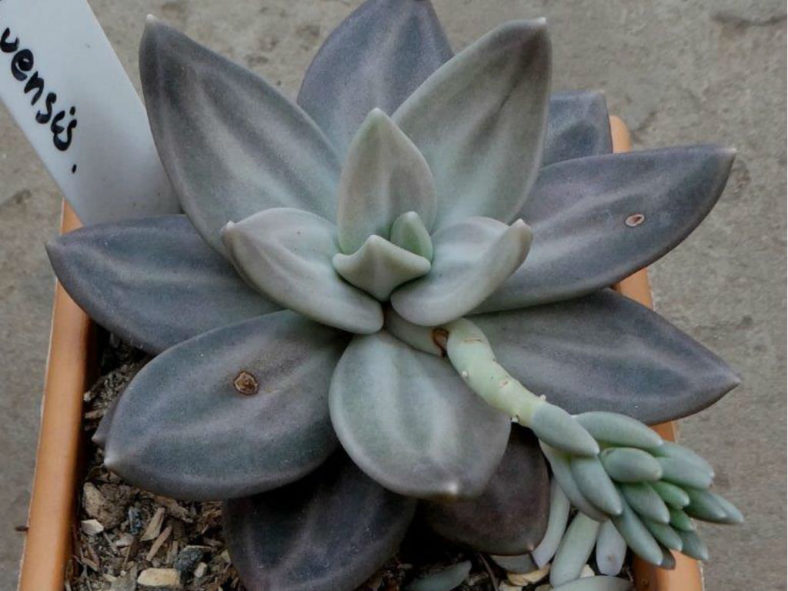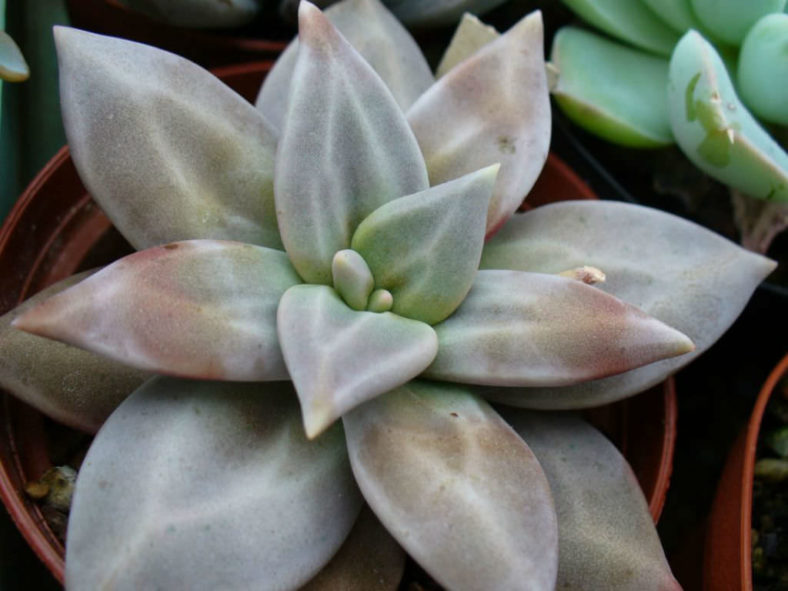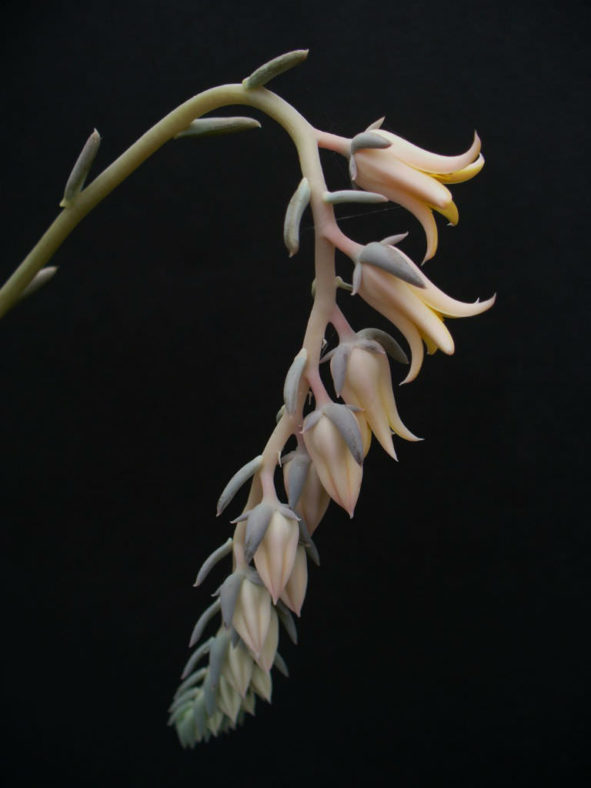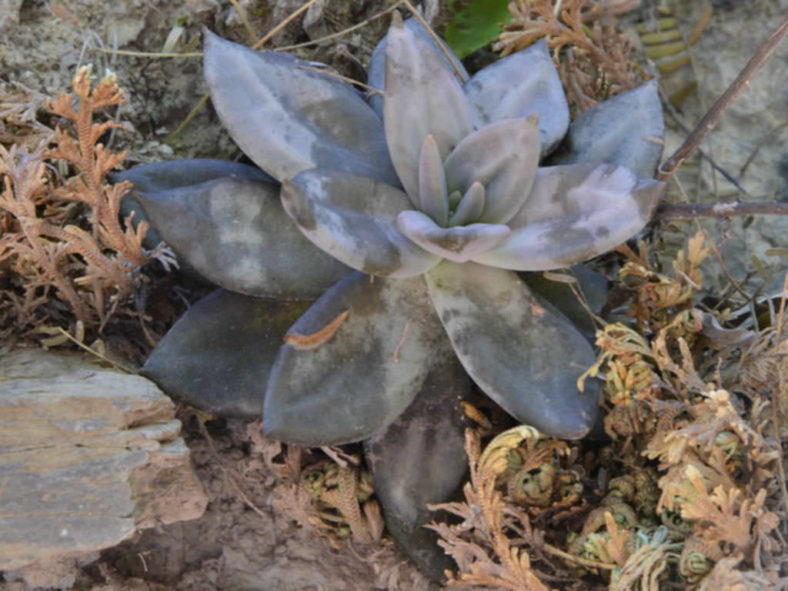Scientific Name
Echeveria xichuensis L.G.Lopez Chavez & J.Reyes
Accepted Scientific Name
Echeveria humilis Rose ex Britton & Rose
Scientific Classification
Family: Crassulaceae
Subfamily: Sempervivoideae
Tribe: Sedeae
Genus: Echeveria
Etymology
The specific epithet "xichuensis (ksih-chu-EN-sis)" refers to Xichú, a Mexican city and municipality in the northeast region of Guanajuato, where this species was first discovered.
Origin
Echeveria xichuensis is native to Mexico (Guanajuato).
Description
Echeveria xichuensis is a succulent plant that forms stemless or short-stemmed rosettes of dark olive green leaves with a purple tinge and transverse and longitudinal markings. The rosettes can grow 4.8 inches (12 cm) in diameter. The leaves are thick, elliptical to egg-shaped, measuring up to 2.4 inches (6 cm) long and about 1 inch (2.5 cm) wide.
The flowers are pink with salmon tips, light orange inside, and usually appear in spring.
Echeveria xichuensis was synonymized (IHSP 2003) with Echeveria humilis, but there are significant differences between these two taxa.

How to Grow and Care for Echeveria xichuensis
Light: Echeverias prefer full sun to partial shade. However, avoid drastic sunlight changes and full afternoon sun, especially in summer. During the winter, when your E. xichuensis is inside, put it near the brightest window in your home. The plant will stretch if it does not have enough sunlight.
Soil: E. xichuensis needs a potting soil mix that drains quickly. Many growers will create their own mix. However, commercial cactus and succulent potting mixes will work fine.
Hardiness: Echeverias are tender succulents. Many will tolerate several degrees below freezing but not grow them in the ground if they are subject to harsh conditions. E. xichuensis can withstand temperatures as low as 25 to 50 °F (-3.9 to 10 °C), USDA hardiness zones 9b to 11b.
Watering: When and how to water is crucial to Echeveria care. They do not like to be kept too wet but do not like to be kept too dry. The "soak and dry" method is the preferred schedule for watering your E. xichuensis. Wrinkled leaves indicate the plant needs more water.
Fertilizing: Echeverias grow well without fertilizer but may benefit from the extra nutrients. Use a slow-release fertilizer in spring or a liquid fertilizer diluted 2 to 4 times more than usual and used less often than recommended.
Repotting: Repot only as needed during spring or early summer when E. xichuensis is actively growing. Make sure the soil is dry before repotting.
Propagation: These succulents are usually propagated from offsets or leaves, but Echeverias can also be grown from stem cuttings and seeds. The best time to separate offsets and take cuttings is in the spring. Sow the seeds in spring or summer.
Learn more at How to Grow and Care for Echeveria.
Toxicity of Echeveria xichuensis
Echeverias are safe around pets and humans, although it is not advisable to eat them.
Links
- Back to genus Echeveria
- Succupedia: Browse succulents by Scientific Name, Common Name, Genus, Family, USDA Hardiness Zone, Origin, or cacti by Genus
Photo Gallery
Click on a photo to see a larger version.


